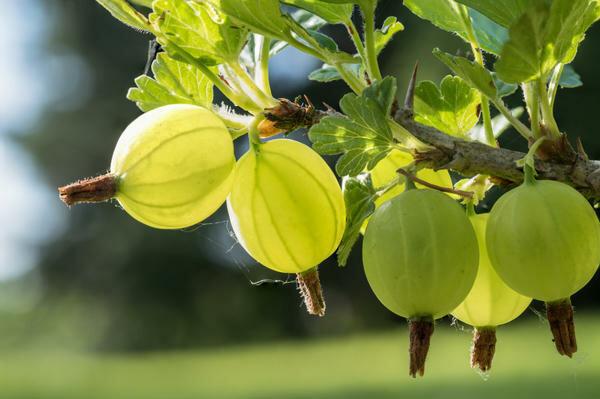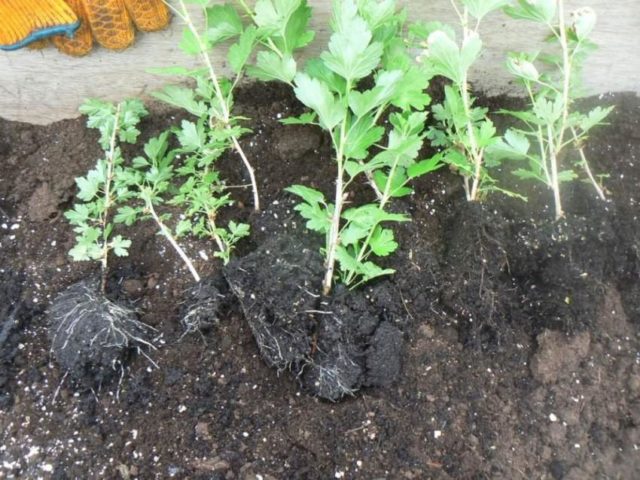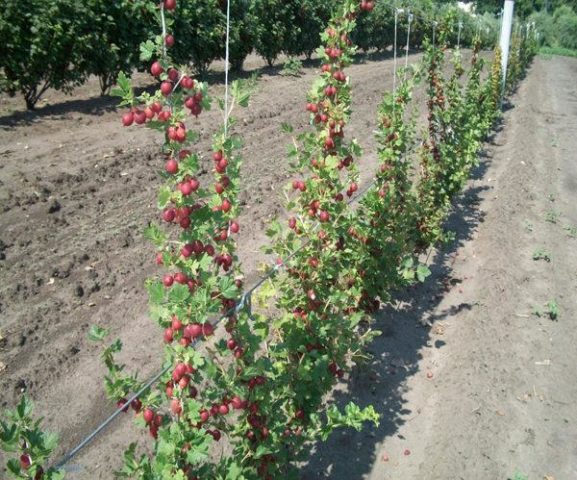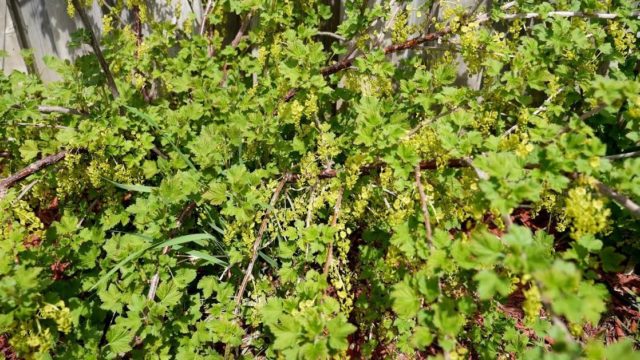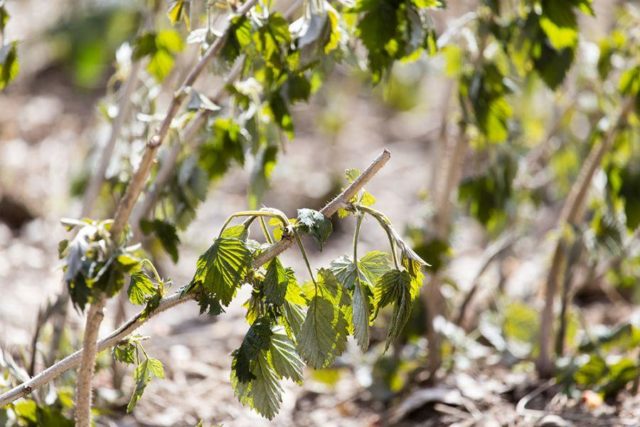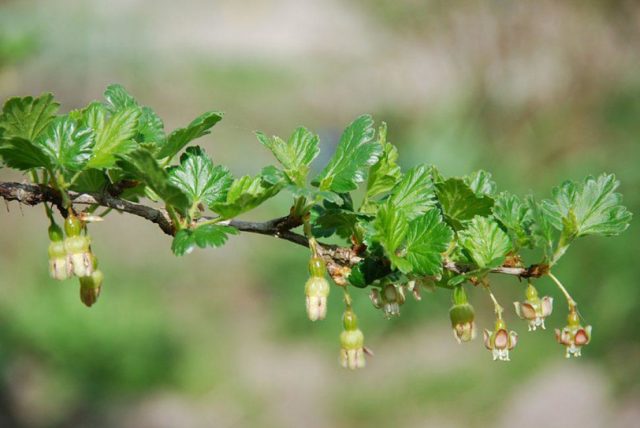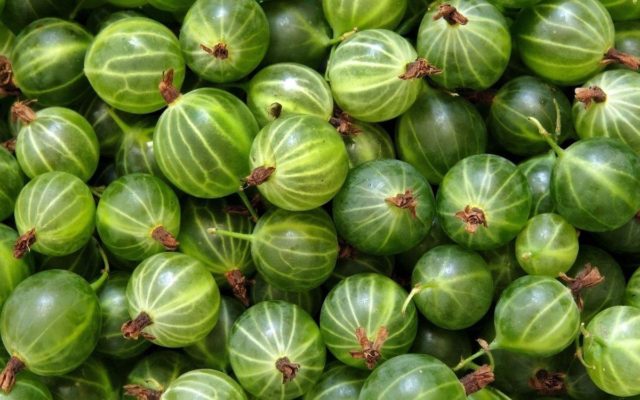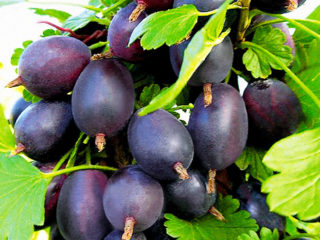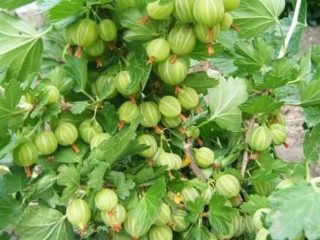Content
Gooseberry is a useful shrub berry that grows in summer cottages and household plots, which, with proper care, pleases with a stable harvest. The gooseberry does not bear fruit in conditions when the rules of agricultural technology are violated or the planting requirements are not met.
The main reasons why gooseberries do not bear fruit
Gooseberries are classified as shrubs. It can grow up to 1.2 m. Fruiting can be uneven: it starts in June, lasts until August. The exact timing depends on the varietal characteristics.
The absence of ovaries or the inability to form full-fledged fruits can be the result of one or more reasons:
- the bushes have not reached a suitable age for the beginning of fruiting;
- gooseberries do not bear fruit because they are too old;
- landing requirements are violated;
- there are not enough nutrients in the soil;
- the bush is thickened, imaginary shoots are not cut off;
- the root system rots due to fungal infection or pest damage.
Incorrectly selected variety
One of the reasons that gooseberries do not bear fruit may be a mistake when choosing a variety, varieties of culture are without thorns and with thorns. This affects the characteristics of the bush and the characteristics of care.
When choosing a variety for a region, take into account:
- indicators of frost resistance and winter hardiness;
- soil requirements;
- air humidity conditions.
Poor quality planting material
The gooseberry does not bear fruit due to a poor-quality seedling either in the second or third year of its existence. You can determine the poor quality of a seedling by the appearance of a young bush. The bush develops slowly or stops growing at a certain stage. On external examination, you can notice the shortcomings of the root system due to the underdevelopment of the hairs.
Violation of landing rules
This reason is especially common. It may include a complex of factors that influenced the adaptation and further growth of the shrub:
- Wrong selection of placement. Gooseberries bear poor fruit when fully or partially shaded. Bushes are not planted under dense crowns of tall trees. Gooseberries also do not tolerate through winds and water stagnation in lowlands.
- Unsuitable soil. For gooseberries, neutral or low acid soils are selected. An excess of acid inhibits the development of roots and stems.
- Violations in the preparation of the landing hole. For each crop, the size of the planting holes is important. Excessive deepening prevents the trunk from growing and forming shoots. Gooseberries are planted in pits up to 50 cm deep.
- Landing Violations. A distance of about 2.5 m is left between the rows of gooseberries. Between the seedlings, indents from 1.2 to 1.5 m are made. The gooseberries will not bear fruit if the seedlings are planted too close - this will prevent the roots from growing in breadth.
Violation of the rules of care
After planting a seedling, an important and long period of care begins, but at this stage gardeners make typical mistakes.
- Watering. In order for the gooseberry to bear fruit, it needs regular watering. At the same time, stagnant water can provoke rotting of the root system. The bushes are watered weekly, 4 - 6 liters of warm water are prepared for each adult plant.
- Fertilization. During the growing season, 3 main dressings are made. When the soil is depleted, the impossibility of assimilating nutrients, the gooseberry will not bear fruit. In the spring, nitrogen is added to form leaves, then fed with potassium-phosphorus mixtures to support fruit formation.
- Loosening and mulching. Failure to comply with these agrotechnical practices cannot be the main reason, but they can be a prerequisite for the lack of fruiting. Loosening provides the soil with extra air, which makes it lighter and encourages root growth. Mulching helps to retain moisture in the event of a drought and prevents weeds from spreading.
Violation of the rules of pruning
Removing excess branches, damaged shoots and forming a bush is important for shrub crops. Gooseberries are cut several times throughout the season, taking into account the varietal characteristics and condition of the bushes. If the pruning is carried out superficially, then the gooseberry ceases to bear fruit or does not bear fruit at full strength.
Fruiting can be hampered by improper pruning during planting. Saplings are completely cut off to 4 buds, weak shoots are cut at the root.
In the second year of life, the formative landing is important. With insufficient pruning, partial or complete thickening, gooseberries do not have the necessary strength to form fruit.
Shrub age
Varietal characteristics imply different dates for the onset of fruiting. Usually gooseberries bear fruit in the 2nd - 3rd year of existence. The period can stretch up to 4 years of age.
The first 8 years of fruiting are considered the most abundant for gooseberries, then the yield gradually decreases. Growers observe bursts of activity after dramatic rejuvenating pruning.
Unfavorable weather conditions during the flowering period
The onset of frost, when the gooseberry begins to bloom, can cause no fruit to appear. This is stress for the bush, after which the adaptation period begins.
Temperature jumps are especially dangerous when flowering. Hot weather, alternating with a drop in temperature and precipitation, leads to the fact that the gooseberry sheds its buds and, as a result, does not bear fruit.
Lack of pollinators
Among the hybrid varieties, there are several varieties that have the ability to form dry winds. This happens during May-June, when the weather is hot for a long time, there is no precipitation. As a result, pollen that gets on dry pistils cannot lead to the timely formation of an ovary.
In addition, gooseberry pollination depends on the degree of self-pollination. Among the varietal varieties, specimens with varying degrees of pollination are chosen, it depends on the adjacent plantings:
- high rates of self-pollination: Smena, Russian, Plum;
- medium: Chelyabinsk green, Chernomor;
- low: Record.
Pests and diseases
Lack of fruiting or a noticeable decrease in its volume may indicate that the bush is beginning to hurt. The danger is represented by fungal diseases of the root system. They develop slowly and interfere with the formation or full ripening of the berries.
It is possible to determine that the gooseberry does not bear fruit due to the development of the disease by the accompanying symptoms:
- discoloration of sheet plates;
- the appearance of dry spots at the ends of the leaves;
- wilting of leaves, dumping of buds.
Insects are found on the leaves upon close inspection.As a rule, they leave traces of their vital activity or lay eggs on the back of the leaves.
What to do and how to make gooseberries bear fruit
The factors that lead to the fact that the gooseberry does not bear fruit can be eliminated. It takes from several months to a whole season to adjust:
- When thickening, formative pruning is shown. In the summer, branches are removed, which block the access of sunlight to the main part of the bush. In the fall, the damaged shoots are cut, in the spring, a planned shortening is carried out.
- Under the tree crowns, in the shade, the gooseberry begins to ache with a fungus and ceases to bear fruit. The bushes are transplanted to sunny areas, but at the same time it is taken into account that fruiting will be delayed for several years due to adaptation.
- Many gardeners are wondering what to do if the gooseberry does not bear fruit due to poor pollination. The best option is to plant other varieties of crops in the neighborhood.
- Yellowing of leaf tips, dryness and drooping of buds may indicate a lack of nutrients. Then, during the flowering period, watering is carried out with potassium nitrate solutions at the root. Feeding with mineral mixtures with the addition of magnesium and phosphorus is suitable.
- If the reason was non-compliance with the layout, then the bushes should be thinned out. Some of the shrubs are transplanted to a new place, while they do not expect fruits earlier than next year. The old bushes will begin to bear fruit this year.
- If you suspect the development of a fungus, the bushes are watered with a solution of manganese, wood ash, and treated with a tobacco solution. Treatments are carried out at intervals of 2 to 3 weeks. During this period, observe the appearance of the bush. The appearance of young leaves indicates that the gooseberry is cured.
Conclusion
Gooseberries do not bear fruit for various reasons. If the lack of fruiting is not a consequence of reaching the maximum age of the bush, then the situation can be corrected. Gooseberry fruiting is restored completely for the next season.
